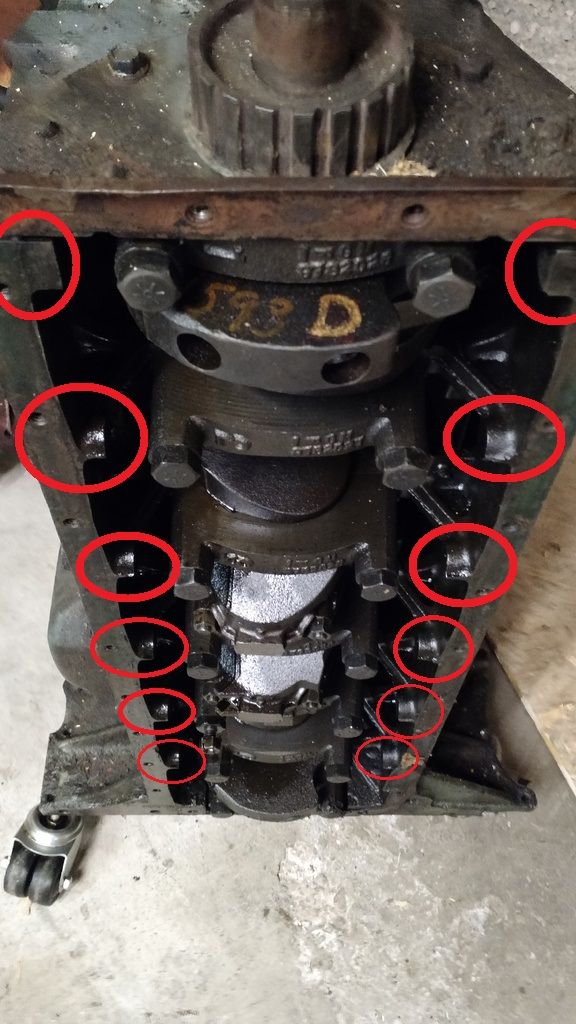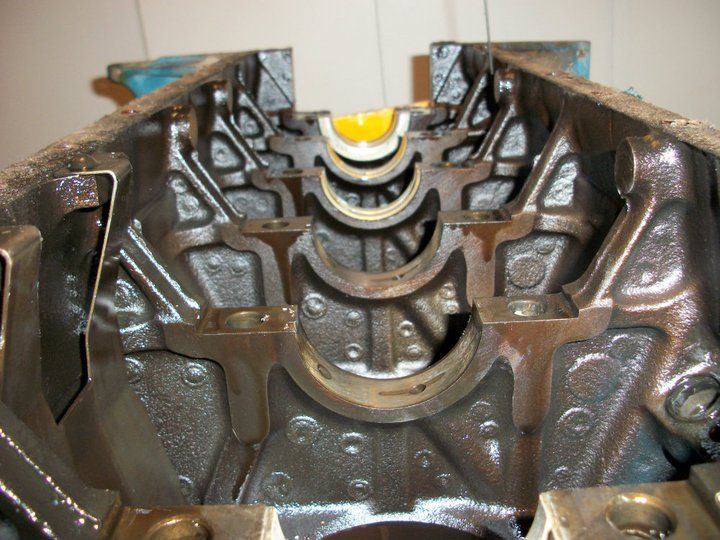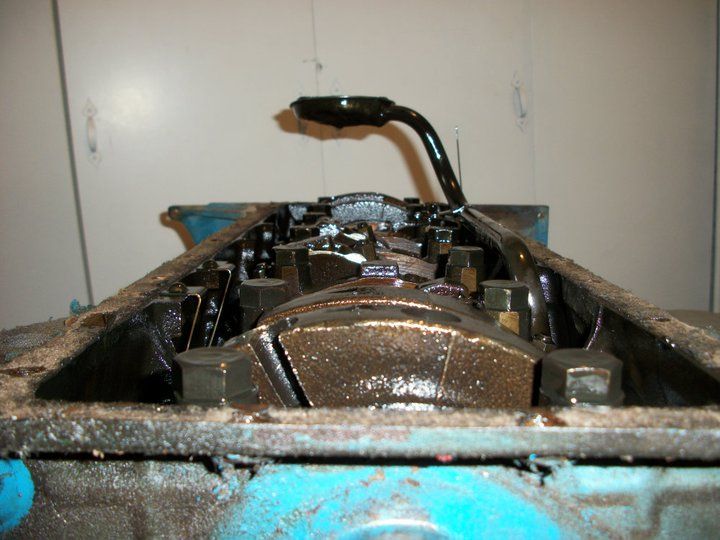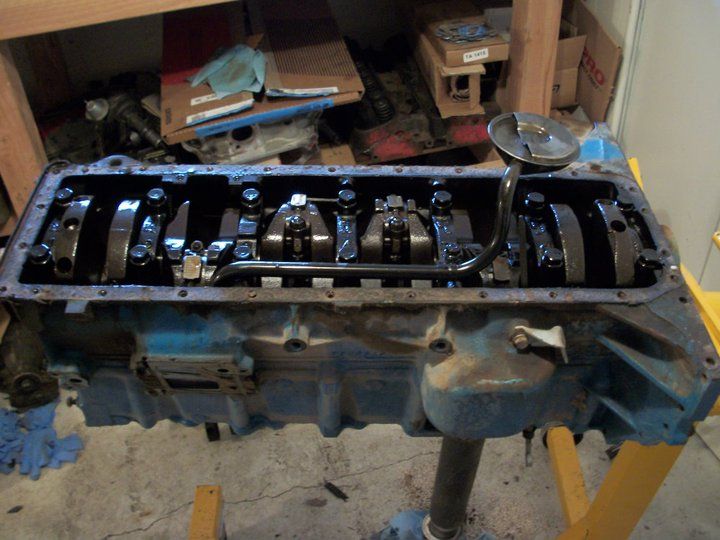|
|
Joined: Jan 2010
Posts: 349
Contributor
|
OP

Contributor
Joined: Jan 2010
Posts: 349 |
So, one of these engines just came available to buy... Im wondering if it is a good engine to build for serious performance? Like, 20 + psi turbo
Thoughts?
|
|
|
|
|
Joined: Jan 2005
Posts: 2,123 Likes: 3
1000 Post Club
|

1000 Post Club
Joined: Jan 2005
Posts: 2,123 Likes: 3 |
The Sprint (4 bbl.) head is fairly good (12 port), but the cam and related parts are fragile and not easily available. It's not as tall as a 292 or Atlas and will fit in a smaller car wherever a 250 will.
|
|
|
|
|
Joined: Sep 2008
Posts: 3,673 Likes: 42
1000 Post Club
|

1000 Post Club
Joined: Sep 2008
Posts: 3,673 Likes: 42 |
So, one of these engines just came available to buy... Im wondering if it is a good engine to build for serious performance? Like, 20 + psi turbo
Thoughts? Inliners member TheSilverBuick is building one in that range with my EFI intake. He has a post in this same subforum with his progress.
Class III CNC Machinist/Programmer
|
|
|
|
|
Joined: Dec 2010
Posts: 535
Major Contributor
|

Major Contributor
Joined: Dec 2010
Posts: 535 |
Yup, the pile of machined parts is still sitting nicely wrapped on my garage floor. The engine in the car is down a bunch of compression with a lot of blow-by (the blow-by was pre-turbo). Currently an oversized turbo only kicking out about 7psi in the 1/4 mile, though when cruising at highway speeds and laying the pedal down it will go higher. From 1/4 mile mph, it went from 175HP to ~240HP on the worn out engine. When I get the good engine together I'll re-evaluate my turbo selection. The oddness of the engine does limit cam selection significantly.  (and if someone findes a OHC long block around CNC-Dude, let us know! Its friggin $240 to ship a OHC head and cam housing across the country. I've checked Fastnel, Freight Pro's and FedEx)
|
|
|
|
|
Joined: Jan 2005
Posts: 2,123 Likes: 3
1000 Post Club
|

1000 Post Club
Joined: Jan 2005
Posts: 2,123 Likes: 3 |
Trailways/Greyhound may be cheaper but make the box out of 2 X 4, it's going to get kicked around. Terminal to terminal is cheapest if you're near one.
W/r/t turbo size: is the whole thing too big, or just the A/R?
I would guess 20 psi would make over 400 hp with an IC.
There's a lot of conversation on line about the cam, tower, fingers, etc. as to what fails and how to fix it that I don't understand but for boosted I would be most concerned with getting the best condition stock parts rather than $$$ to get more peak power.
What struck me as a false lead was discussion about porting, valve sizes etc. I have not seen any demo that predicts how a small head (Toyota 2JZ) can produce huge power when almost everything else isn't even close at the same boost level.
|
|
|
|
|
Joined: Jan 2005
Posts: 2,123 Likes: 3
1000 Post Club
|

1000 Post Club
Joined: Jan 2005
Posts: 2,123 Likes: 3 |
|
|
|
|
|
Joined: Jan 2005
Posts: 2,123 Likes: 3
1000 Post Club
|

1000 Post Club
Joined: Jan 2005
Posts: 2,123 Likes: 3 |
|
|
|
|
|
Joined: Jan 2005
Posts: 2,123 Likes: 3
1000 Post Club
|

1000 Post Club
Joined: Jan 2005
Posts: 2,123 Likes: 3 |
Among the many differences between the Gen-3 L6 (Chevrolet, Buick, Oldsmobile, and older & newer Pontiac) and the OHC engine is that the "normal" block is skirtless (like a Gen-2): the oil pan rails and upper main bearing saddles & main cap seating surfaces are all flush with the crankshaft centerline. The OHC block is skirted (like a nailhead Buick): the block extends down below the crank, and the main caps seat up inside the block rather than on it.
Without conjecture as to other factors, the skirted block has the following advantages:
1. greater stiffness (resistance to distortion under power)
2. greater crankcase air volume below the pistons and above the oil level (reduced pumping loss)
3. greater distance from the lowest point of the rotating crankshaft to the pan rail (less windage)
|
|
|
|
|
Joined: Sep 2008
Posts: 3,673 Likes: 42
1000 Post Club
|

1000 Post Club
Joined: Sep 2008
Posts: 3,673 Likes: 42 |
TheSilverBuick has shown me some of his blocks and main caps have provisions to be cross bolted on the mains. They are a lot beefier of a block than the Chevy 6's.
Class III CNC Machinist/Programmer
|
|
|
|
|
Joined: Jan 2005
Posts: 2,123 Likes: 3
1000 Post Club
|

1000 Post Club
Joined: Jan 2005
Posts: 2,123 Likes: 3 |
Looks like there are potential "landing spots" on the block wall lateral to the main caps, but cross-bolting to these locations appears to require a new wider and taller cap, somewhat "V" shaped to avoid the wall except where attached.
|
|
|
|
|
Joined: Dec 2010
Posts: 535
Major Contributor
|

Major Contributor
Joined: Dec 2010
Posts: 535 |
The '66 blocks are set up for cross bolting on mains 1-6, the later blocks omit a couple of the casted bosses. Also both the main and head bolts are all 1/2" bolts instead of 7/16th. '66 block. John DeLorean had big dreams at one point.  '67-'69 blocks.  The crank just barely dips below the block. This is a '69 250.  
Last edited by TheSilverBuick; 06/10/19 04:30 PM.
|
|
|
|
|
Joined: Jan 2005
Posts: 2,123 Likes: 3
1000 Post Club
|

1000 Post Club
Joined: Jan 2005
Posts: 2,123 Likes: 3 |
Is that unique to the Sprint block? Or just early vs. late?
|
|
|
|
|
Joined: Dec 2010
Posts: 535
Major Contributor
|

Major Contributor
Joined: Dec 2010
Posts: 535 |
All 1966 blocks have the bosses cast in, rather 1bbl or 4bbl.
From 1967 onwards for some reason or another Pontiac eliminated every other cross bolting boss. So it's on one side, but not the other. Again, didn't matter if its a 1bbl or 4bbl.
And to be clear, all the OHC engines have the 1/2" mains and head bolts.
Last edited by TheSilverBuick; 06/10/19 07:05 PM.
|
|
|
|
0 members (),
125
guests, and
27
robots. |
|
Key:
Admin,
Global Mod,
Mod
|
|
|
|

